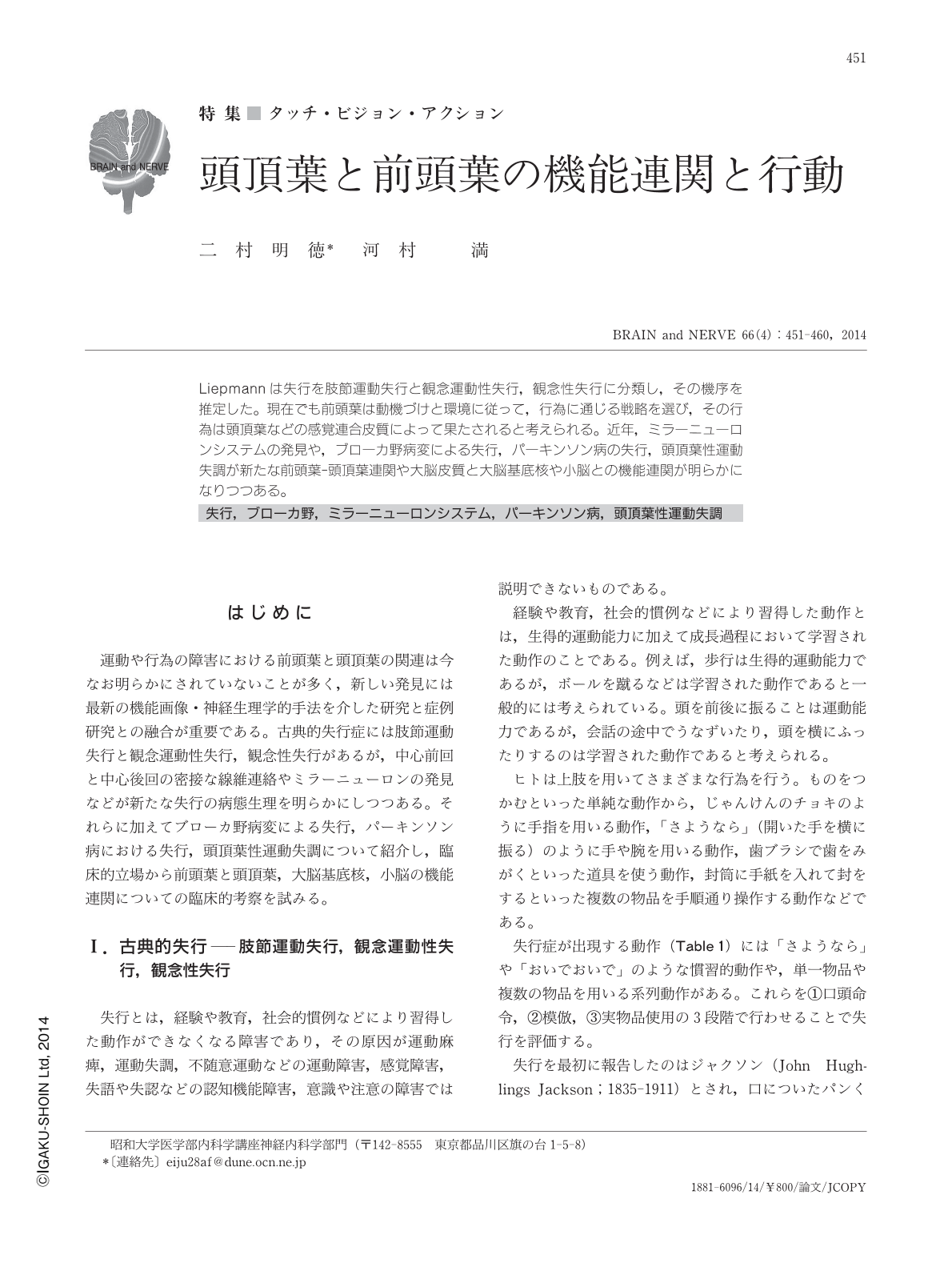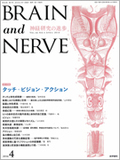Japanese
English
- 有料閲覧
- Abstract 文献概要
- 1ページ目 Look Inside
- 参考文献 Reference
Liepmannは失行を肢節運動失行と観念運動性失行,観念性失行に分類し,その機序を推定した。現在でも前頭葉は動機づけと環境に従って,行為に通じる戦略を選び,その行為は頭頂葉などの感覚連合皮質によって果たされると考えられる。近年,ミラーニューロンシステムの発見や,ブローカ野病変による失行,パーキンソン病の失行,頭頂葉性運動失調が新たな前頭葉-頭頂葉連関や大脳皮質と大脳基底核や小脳との機能連関が明らかになりつつある。
Abstract
Apraxia is the inability to perform actions or move different parts of the body in the intended manner, despite normal physical capability of movement. Based on his studies, Liepmann divided apraxia into three types: ideational apraxia, ideomotor apraxia, and limb-kinetic apraxia. Clinical findings such as ideomotor apraxia in Broca's area and apraxia in patients with Parkinson's disease (PD) and parietal ataxia suggest sensorimotor integration and action control in the parietofrontal circuits.
Based on studies of the mirror neuron system, disorders in gesture production could be associated with disorders of gesture understanding. We recently reported ideomotor apraxia in association with lesions in Broca's area. Broca's area is the center of speech production, and also mediates action production. Although apraxia is not a typical clinical feature of PD, varying degrees of apraxia have been reported. The dysfunction of the motor and premotor areas, which send projections to the basal ganglia, causes this apraxia.
Parietal ataxia is caused by lesions in the parietal lobe, which are thought to be caused by disconnection between the cerebellum and Brodmann area 5 in the parietal lobe.

Copyright © 2014, Igaku-Shoin Ltd. All rights reserved.


